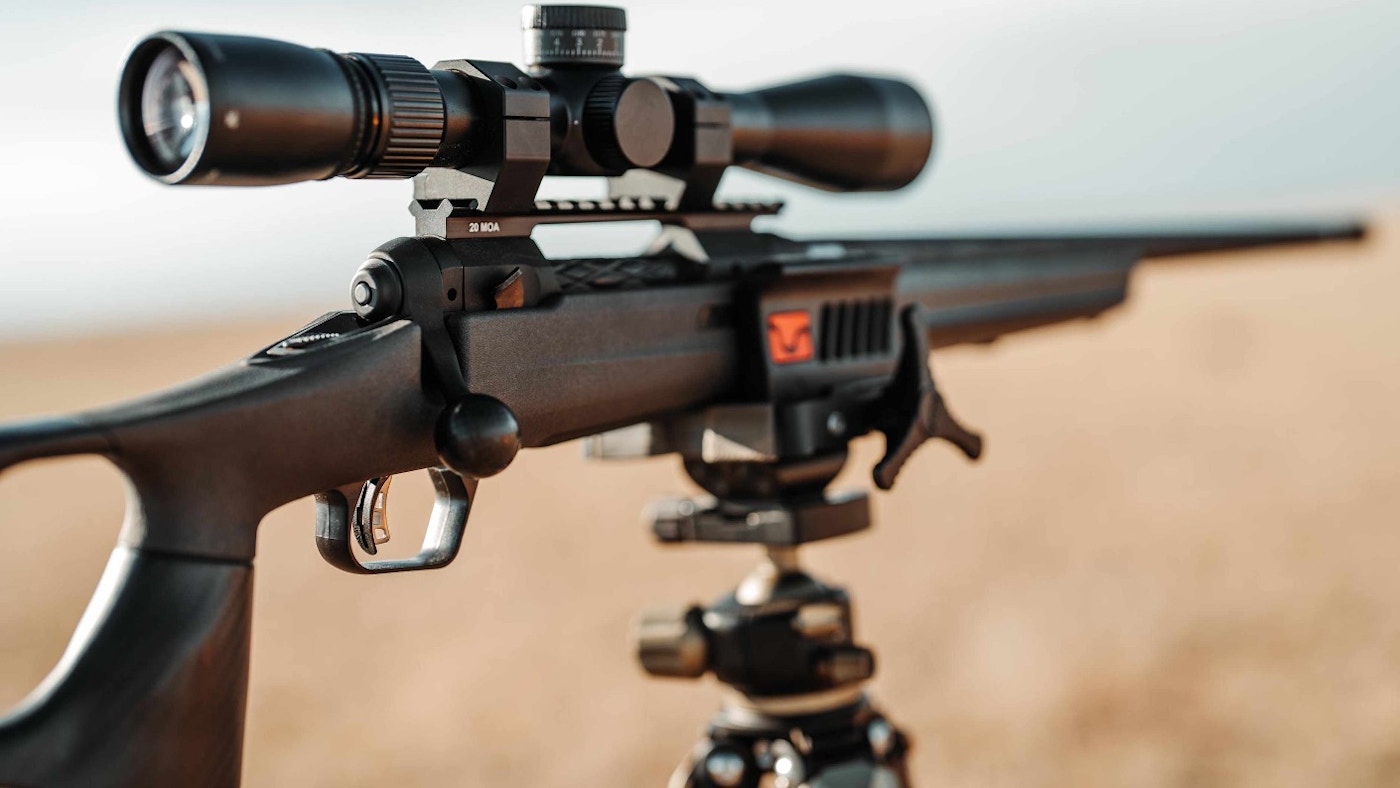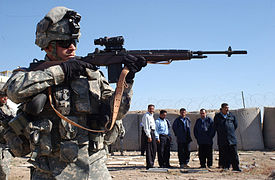Bolt-action rifles are one of the oldest and most respected types of firearms, known for their accuracy, simplicity, and reliability. Whether used for military purposes, hunting, sport shooting, or precision marksmanship, these rifles have stood the test of time, remaining a favored choice among shooters around the world. While newer technologies, such as semi-automatic and automatic rifles, have emerged, the bolt-action rifle continues to play a crucial role in both civilian and military contexts.
In this article, we will explore the history, mechanics, types, uses, and advantages of bolt-action rifles, highlighting why they remain popular even in the modern age of firearms.
1. What is a Bolt-Action Rifle?
A bolt-action rifle is a manually operated firearm in which the shooter uses a bolt to load, chamber, and eject rounds. The bolt must be cycled by hand after each shot is fired. The rifle operates on the principle of a manually operated, rotating bolt that locks and unlocks the chamber.
Key features of bolt-action rifles include:
- Manual Operation: The bolt must be manually operated to load a round, chamber it, and eject a spent casing.
- Single Shot or Magazine-fed: While many bolt-action rifles hold just one round at a time, others have detachable or internal magazines that can hold multiple rounds.
- Accuracy: The design of a bolt-action rifle minimizes the movement between the rifle and the shooter, contributing to greater accuracy, particularly at long ranges.
2. History of Bolt-Action Rifles
Bolt-action rifles emerged as a significant advancement in firearm design during the 19th century. Prior to bolt actions, firearms were typically muzzle-loading, requiring the shooter to manually load powder, a bullet, and a cap before each shot. The development of the bolt-action rifle dramatically improved efficiency and reloading times.
- Early Designs: The bolt-action rifle was first developed in the mid-1800s. The Krupp and Mauser designs were among the first successful bolt-action mechanisms to replace muzzle-loaders. The Mauser 71, introduced in 1871, was a pioneering design that set the standard for future bolt-action rifles.
- The Mauser 98: The German Mauser 98, introduced in 1898, is one of the most influential bolt-action rifles in history. It was the standard-issue rifle for the German Army during both World War I and World War II. Its rugged reliability and accuracy made it a favorite in military and civilian circles alike.
- Post-War Developments: After the world wars, bolt-action rifles were further refined for civilian markets, particularly for hunting and sport shooting. Models like the Remington 700 and Winchester Model 70 became some of the most well-known bolt-action rifles in the postwar era.
3. How Do Bolt-Action Rifles Work?
The mechanics of a bolt-action rifle are relatively simple but effective. The basic action involves cycling the bolt by hand to load, chamber, fire, and eject a round. Here’s a step-by-step breakdown of how it works:
- Loading: A round is manually inserted into the chamber. This can be done either by loading a single round or by inserting a magazine, which feeds rounds into the chamber.
- Cycling the Bolt: To chamber a round, the shooter lifts the bolt handle, rotates the bolt to unlock it, and pulls it back to eject the spent casing. The shooter then pushes the bolt forward, chambers the next round, and locks the bolt in place by pushing the handle down.
- Firing: After the rifle is chambered and the safety is disengaged, the shooter pulls the trigger to fire. The firing pin strikes the cartridge’s primer, igniting the powder and firing the bullet.
- Ejecting: After firing, the shooter manually cycles the bolt again to eject the spent cartridge and load a new round. This process repeats with each shot.
4. Types of Bolt-Action Rifles
Bolt-action rifles come in a variety of designs, each catering to different needs, from military use to civilian hunting and sport shooting.
4.1. Military Bolt-Action Rifles
Many famous bolt-action rifles were initially designed for military use, especially during the 19th and early 20th centuries. These rifles are typically chambered for powerful military calibers and are designed for ruggedness and reliability.
- Mauser Kar98k: One of the most iconic bolt-action rifles, the Mauser 98 family, including the Kar98k, became the standard-issue rifle for the German military in the 1930s. It was chambered in 7.92×57mm Mauser and was used extensively in both World Wars.
- Lee-Enfield No. 4 Mk I: The British military’s standard bolt-action rifle during World War II, chambered in .303 British. The Lee-Enfield was known for its smooth action and high rate of fire, with many soldiers able to fire up to 20 aimed shots per minute.
- Mosin-Nagant: A bolt-action rifle used by the Soviet Union during World War I, World War II, and beyond. This rugged and reliable rifle was chambered in 7.62×54mmR and became one of the most widespread military rifles in the world.
4.2. Hunting Bolt-Action Rifles
Bolt-action rifles are extremely popular for hunting, offering precision and accuracy over long distances. These rifles are available in a wide variety of calibers, from small varmint calibers like .223 Remington to large-game calibers like .30-06 Springfield.
- Remington 700: The Remington 700 is one of the most well-known hunting rifles, praised for its accuracy and reliability. It is available in many different calibers, making it a versatile choice for hunters of all types.
- Winchester Model 70: Known as the “Rifleman’s Rifle,” the Winchester Model 70 has been a favorite among hunters for decades. It is known for its accuracy, solid construction, and smooth bolt action.
4.3. Sniper Rifles
Bolt-action rifles remain the standard for military and police sniper rifles due to their precision and stability. Many sniper variants are based on well-known bolt-action rifles and are equipped with high-powered scopes for long-range engagements.
- Accuracy International AW: A British-made sniper rifle that has been widely used by military forces around the world. It is renowned for its precision and is chambered in calibers such as .338 Lapua Magnum and .308 Winchester.
- Remington 700 PSS: The Remington 700 is also widely used as a sniper rifle, especially by U.S. law enforcement and military units. The rifle’s accuracy and adaptability make it an ideal platform for precision shooting.
5. Uses of Bolt-Action Rifles
Bolt-action rifles are versatile and can be used in a variety of contexts:
- Hunting: Due to their exceptional accuracy and ability to fire single, precise shots, bolt-action rifles are a preferred choice for hunting, particularly for larger game such as deer, elk, and bears. They are also used for varmint hunting due to their long-range capabilities.
- Sport Shooting: Competitive shooting disciplines, such as long-range target shooting and hunting rifle competitions, often feature bolt-action rifles due to their precision and consistency. These rifles are designed for shooters who prioritize accuracy over rapid fire.
- Military and Law Enforcement: Bolt-action rifles are still used in specialized military applications, particularly by snipers. Their inherent accuracy at long ranges makes them invaluable for counter-sniper operations and precision engagements.
- Collecting: Older military and historical bolt-action rifles are highly prized by collectors. Models such as the Mauser 98, Lee-Enfield, and Mosin-Nagant are sought after by firearm enthusiasts for their historical significance and craftsmanship.
6. Advantages and Disadvantages of Bolt-Action Rifles
Advantages:
- Accuracy: Bolt-action rifles are known for their exceptional accuracy. The manual operation of the bolt ensures the rifle remains locked during firing, minimizing movement and enhancing precision, especially at longer ranges.
- Reliability: With fewer moving parts than semi-automatic or automatic rifles, bolt-action rifles are incredibly reliable. They are less prone to malfunctions, making them suitable for harsh conditions like those encountered in the military or hunting.
- Simplicity: The mechanical simplicity of bolt-action rifles makes them easy to maintain and operate. There are no complex parts or mechanisms to malfunction, making them highly durable and easy to repair.
- Variety: Bolt-action rifles are available in a wide range of calibers and configurations, from lightweight hunting models to heavy-duty military sniper rifles.
Disadvantages:
- Rate of Fire: Since the shooter must manually cycle the bolt after each shot, the rate of fire is slower compared to semi-automatic or automatic rifles. This is a disadvantage in situations requiring rapid follow-up shots.
- Reloading: While many bolt-action rifles use detachable or internal magazines, most designs hold fewer rounds than semi-automatic rifles, requiring more frequent reloading.
- Weight and Size: Some bolt-action rifles, especially those designed for military or sniper use, can be heavy and bulky, which may affect mobility.
7. Conclusion
Bolt-action rifles have been a staple of firearms design for over a century, offering precision, reliability, and simplicity. While they may not match the rate of fire of semi-automatic rifles, their accuracy and ruggedness make them ideal for long-range shooting, hunting, and specialized military applications. Whether you are a hunter, a competitive shooter, or a collector, the bolt-action rifle remains a powerful tool with a rich history and timeless appeal.



